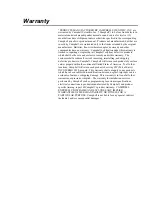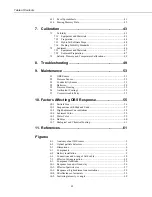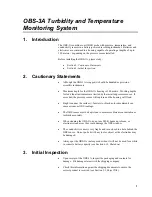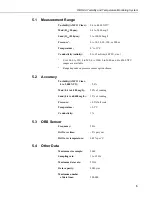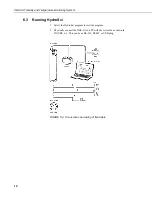
OBS-3A Turbidity and Temperature Monitoring System
3.1 Ships With
CSI pn 21229 Accessory Kit
ResourceDVD
CSI pn 29225 HydroSci Software on DVD
4. Overview
The heart of the OBS-3A is an OBS
®
sensor for measuring turbidity and
suspended solids concentrations by detecting near infrared (NIR) radiation
scattered from suspended particles. With a unique optical design, OBS sensors
perform better than most in situ turbidity sensors in the following ways:
1.
Small size and sample volume,
2.
Linear response and wide dynamic range,
3.
Insensitivity to bubbles and organic matter,
4.
Rejects effects of ambient light and temperature change.
The OBS-3A includes a temperature sensor and may be equipped with pressure
and conductivity sensors. Batteries and electronics are contained in a housing
capable of operating at depths of up to 300 meters, depending on which
pressure sensor is installed. A survey cable may be used to tow the OBS-3A
and a depressor weight by clamping a cable harness to the housing.
Depending on the number of sensors and the statistics selected, the OBS-3A
can log as many as 200,000 lines of data (one per hour for 23 years) including:
time, date, depth, nephelometric turbidity units (NTUs), °C, and salinity.
When sampling with a full suite of sensors, the unit will run about 300 hours.
When using the instrument for surveys, the data are captured by a PC running
the HydroSense software in the log file created at initialization.
4.1 OBS Sensor
The OBS sensor consists of an infrared-emitting diode (IRED) with a peak
wavelength of 875 nm, four photodiodes, and a linear temperature transducer.
The IRED produces a conical beam with half-power points at 50° (FIGURE
4-1). The IR scattered between 140° and 160° is detected after passing through
a daylight-rejection filter and is proportional to turbidity and sediment
concentration. See Section 5,
Specifications
.
2



